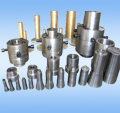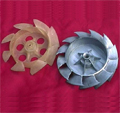

| Address: | PDS Enterprise Inc. 1650 West Artesia Blvd, Suite 278 Gardena, CA90248 |
| Phone: | 1-843-408-0142 |
| Email: | pdsenterprise@gmail.com sales@coolprototyping.com |


Home>Popular Page
70. What Is Plastic Injection Molding?
All of this material started out generally as plastic pellets. The pellets are feed into one of the massive plastic molding machines which often weigh around 25 tons. The machine heats the plastic until it is liquid. This liquid is then forced through injectors into molds.
These custom molds can be made to almost any shape or size. To put it simply, injection molding is the process of forcing melted plastic in to a mold cavity. Once the plastic has cooled, the part can be ejected. It is useful when the parts are too complex or cost prohibitive to machine. With this process, many parts can be made at the same time, out of the same mold.
The process has normally six steps:
1. Clamping: the machine has three parts. The mold, the clamp and the injection unit. The clamping unit holds the mold at a certain pressure, this ensure uniformity in the units that are outputted. Molds are normally made from two parts.
2. Injection Unit: this is where the plastic pellets are loaded into a hopper at the top of the injection unit. The pellets are fed into the main cylinder; this is where they are heated until they are liquefied. Inside the injection unit there is a screw which turns and mixes the plastic. Once this liquid plastic has reached the optimum for this product the injection process starts. The plastic is forced through a sprue and the pressure and speed are controlled by the screw or sometimes a ram depending on the type of machine.
3. Dwelling: this is a pause in the process while some pressure is applied to ensure all the mold cavities have been completely filled. This is very important within the process as it will result in scrap of units if the mold is not filled correctly.
4. Cooling: this part of the process lets the mold cool for the required period. If it is done too quickly the units can stick or become deformed once out of the machine.
5. Mold Opens: The clamping unit is opened to separate the mold. Molds are used over and over again; they are often the most important single part in the whole process. The tooling of mold can be very expensive.
6. Ejection: the finished product is ejected from the injection mold machine. Often the finished product will continue on a production tooling line or be stacked to go to a production line as parts for larger products, e.g. car steering wheel.
The products that use injection molding are used every day by all of us. Many cars would not be so affordable if it was not for injection molding, however there are some disadvantages to the process. The machinery is very expensive and involves a high capital investment, design of parts must bear in mind the production process, and the process is not economically for short runs of products.
However the disadvantage are out-weighed by the greater advantages, the speed at which parts can be made, low labor costs, minimal material waste, and finished parts often need no more finishing.
 We are constantly looking for new products in order to grow our business and Invention Home has enabled us to streamline that process much more quickly.
We are constantly looking for new products in order to grow our business and Invention Home has enabled us to streamline that process much more quickly. Marsha Dunmyre
CA, U.S.A
Cool Prototyping Copyright 2008-2009 © All Rights Reserved. Rapid Prototyping






